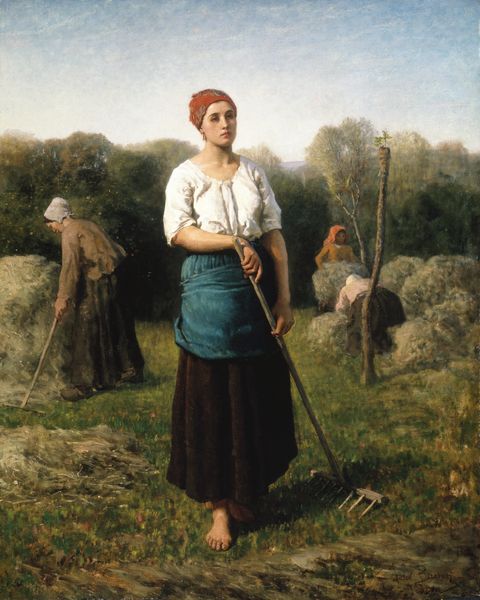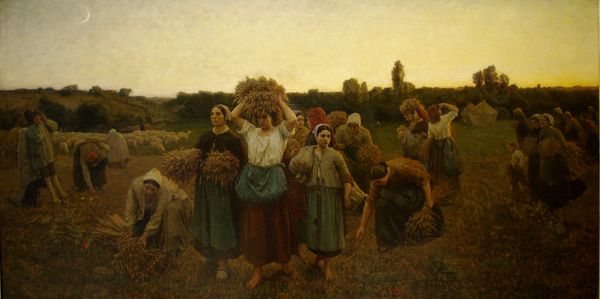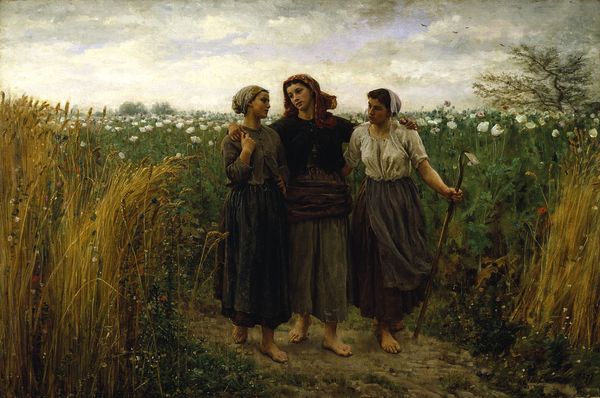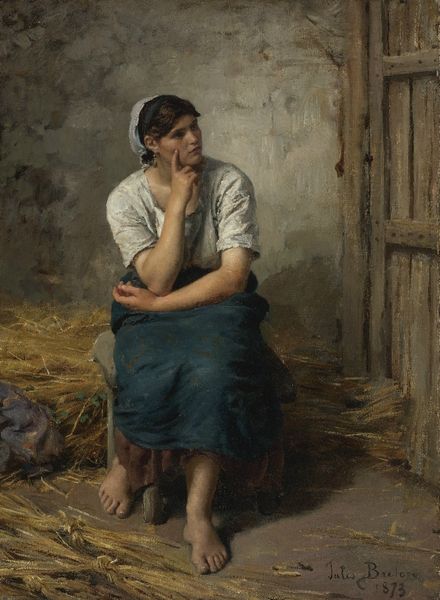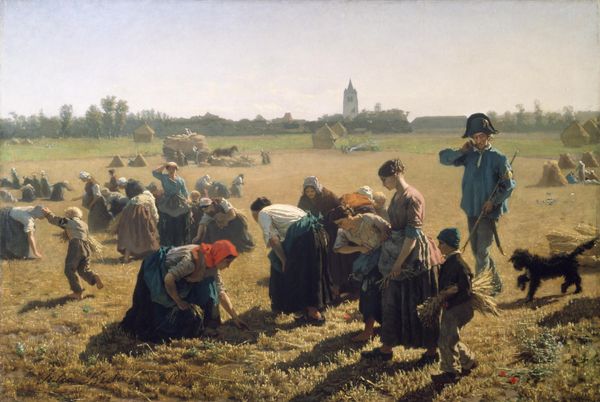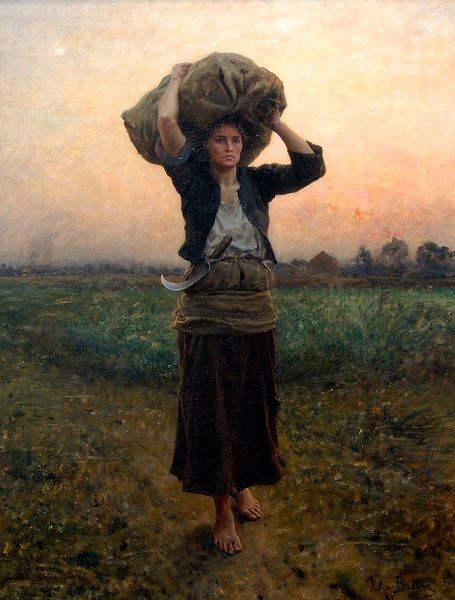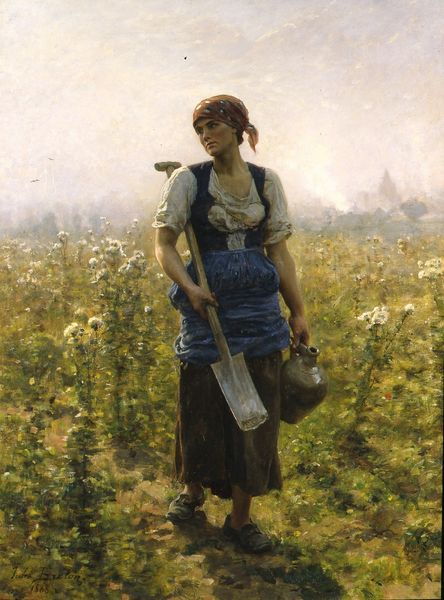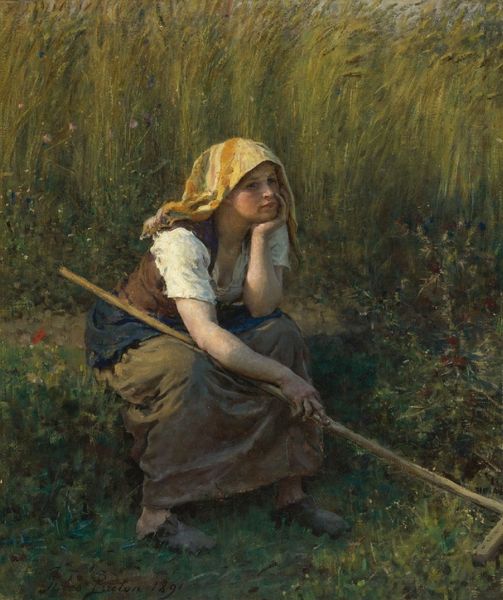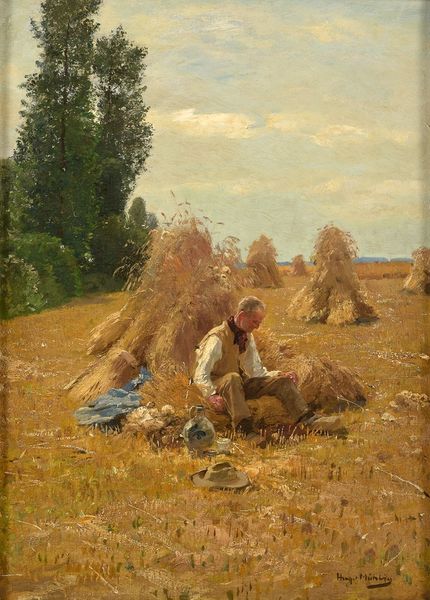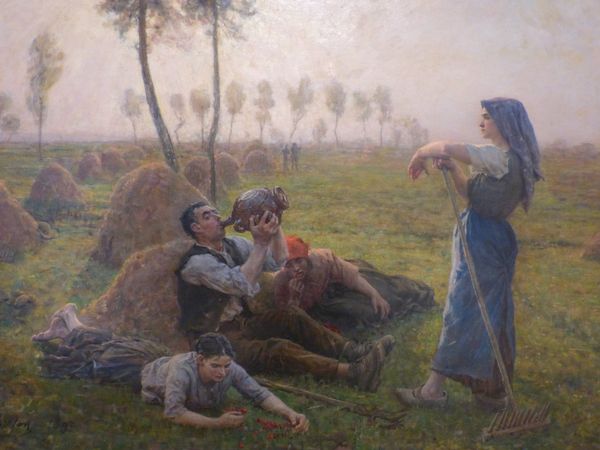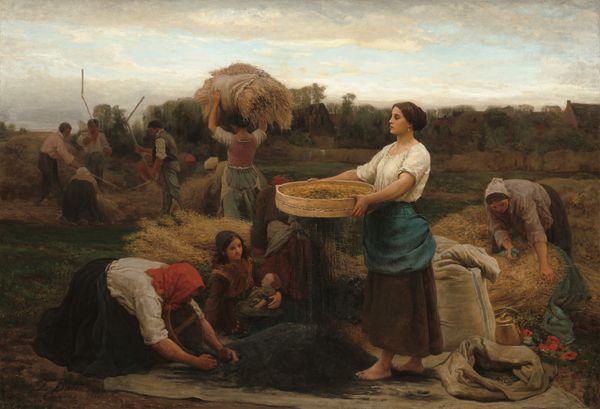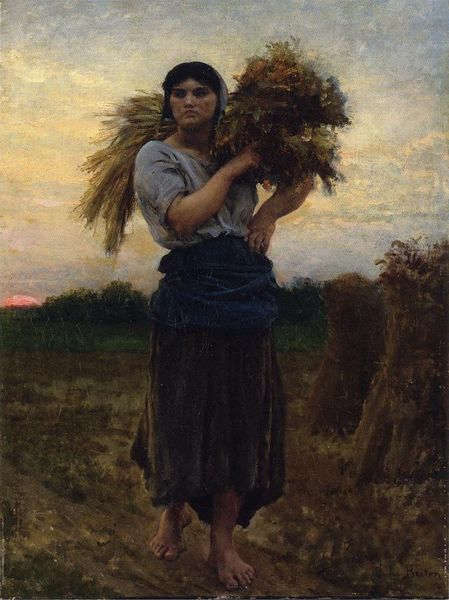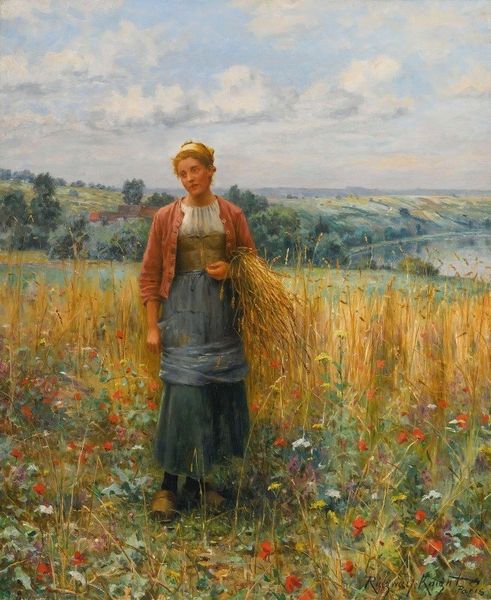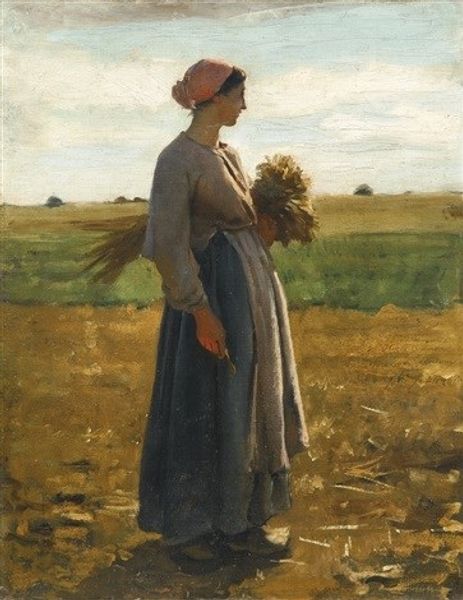
Dimensions: 81.3 x 65.4 cm
Copyright: Public domain
Curator: Jules Breton’s 1860 oil painting, "The Gleaner," strikes me immediately with its almost photographic realism. But there’s something deeper happening here, a narrative suspended. What are your initial thoughts? Editor: There's a pervasive melancholy that’s immediately apparent, despite the bucolic setting. The woman's pensive pose disrupts any straightforward celebration of rural life. It pulls you in, doesn’t it, making you wonder about the social realities underpinning this idealized vision. Curator: Absolutely. Gleaning itself – gathering leftover crops after the harvest – carries a strong historical and cultural weight. Breton presents her with dignity, almost as a classical figure, but there’s an undeniable undercurrent of hardship associated with the gleaner, which, according to cultural memory, is often viewed through a charitable lens. Editor: And her gaze reinforces this tension. She’s not engaging directly with the viewer, or even the labor itself. Instead, there’s a sense of interiority, of a consciousness shaped by her circumstances. It brings into question whose stories get told and how they are framed through artistic license, social class, and institutions displaying the art, wouldn't you agree? Curator: Indeed. Breton consciously elevates this peasant woman, drawing on the artistic conventions of Romanticism and Academic art, perhaps even imbuing her with an almost sacred quality. He is, in essence, visually exploring the cultural continuity of agrarian myths, with her becoming another symbol that goes back centuries, one that also explores the human condition in relationship with nature and struggle. Editor: Yes, and in doing so, he invites the Parisian art world to contemplate the social structures that relegate people to this labor in the first place, highlighting class inequality. In many ways, it reflects the sociopolitical dynamics of the time, but can we separate that from today, from the exploitation of cheap labor that persists today. This isn’t just an image of labor; it is, to my eye, commentary on the very political economy it visualizes. Curator: Ultimately, "The Gleaner" isn't just a beautiful landscape with figures; it is loaded with social meaning. The painting manages to evoke both empathy and critical reflection on societal realities, using universal human experiences through time to deliver the message. Editor: Right, it compels us to consider who defines artistic value, which stories and whose perspectives prevail. Art helps societies analyze and reassess itself continuously.
Comments
No comments
Be the first to comment and join the conversation on the ultimate creative platform.
